Cedar Breaks National Monument
Geology, Wildflowers and Night Skies at 10,000 Feet
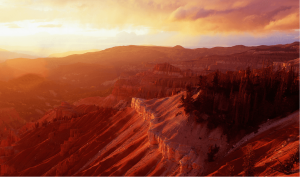
Cedar Breaks National Monument is just located over an hour north and west of Kanab. It sits at the western edge of a large plateau at an elevation of over 10,000 feet. The views from this area are quite spectacular and offer scenic formations similar to those found at Bryce Canyon National Park. This national monument offers a Junior Ranger Program and ranger-guided hikes along with educational programs where visitors may learn about the geology and history of the monument. Wildlife on this plateau is significant with deer, elk, porcupines and more. Sighting of deer will be the most likely occurrence while other large animals (mountain lions, bears, etc.) are less likely to be seen.
https://www.nps.gov/cebr/index.htm
Pipe Spring National Monument
Beneath vermilion cliffs, American Indians, Mormon ranchers, plants, animals, and many others have depended on the life-giving water found at the desert oasis at Pipe Spring.
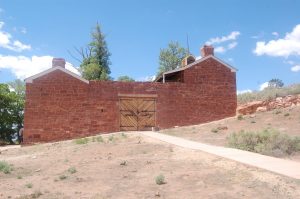
Located near the Utah/Arizona border, adventurous visitors will find one of the best kept secrets of the National Parks system: Pipe Spring National Monument. The monument is a historic pioneer fort located 20 minutes west of Kanab, Utah. The fort was created in the 1870’s for security from the Native Americans, but rarely was used for its original purpose. The fort, surrounding grounds and added interpretive displays are now open to visitors every day of the year. This desolate, remote desert area is home to many plants and animals, largely dependent on the spring water that provides much-needed moisture for life and growth.
https://www.nps.gov/pisp/index.htm
Vermillion Cliffs National Monument
Known for its colorful swirls of slickrock, Vermilion Cliffs National Monument is a sherbet-colored dream world filled with fantastical rock formations like The Wave, White Pockets, and Buckskin Gulch.
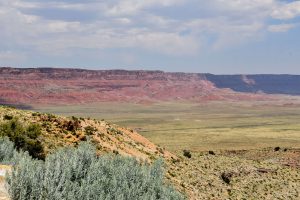
If you’ve seen photos of The Wave—a striated sea of rust-red and sun-gold sandstone, rolling across Arizona’s high desert—then you have seen Vermilion Cliffs National Monument.
But only a fraction of it.
This geologic wonderland is three times the size of Las Vegas, and 3 million times as wild. There are no visitor centers, no developed campsites. Just 3,000-foot cliffs, sandy slot canyons, pulled-taffy rock formations and miles of unmarked paths.
This is where you go if you prefer unspoiled wilderness to well-trafficked trails, and starry silence to crowded campgrounds. The solitude is a factor of Vermilion Cliffs’ remoteness and rugged terrain, yes, but also a lottery-based permitting system that helps preserve the national monument’s wild beauty for generations to come.
https://www.blm.gov/national-conservation-lands/arizona/vermilion-cliffs
Grand Staircase National Monument
A big empty playground for off-roaders, canyoneers and regular old hikers.
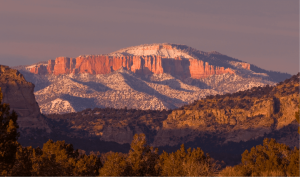
Utah’s Grand Staircase-Escalante National Mounument boundaries were modified by presidential proclamation in December 2017 which reduced the size of the overall monument and separated the monument into three distinct units: Grand Staircase, Kaiparowitz, and Escalante Canyon.
The three units include a vast treasure chest of geologic and other natural wonders. Over 250 million years of Earth’s geologic history reveals itself in the technicolor cliffs within the monument. The land is among the most remote in the country being the last to be mapped in the contiguous United States. The monument is managed by the Bureau of Land Management rather than the National Park Service. This was the first national monument managed by the BLM.
The original monument encompassed nearly 1.9 million acres ( the monument was slightly larger in area than the state of Delaware). After the reduction ordered by presidential proclamation, the monument now encompasses just over 1 million acres.
Glen Canyon National Recreation Area – Lake Powell
Sunshine and Rainbows – Life is Good at Lake Powell
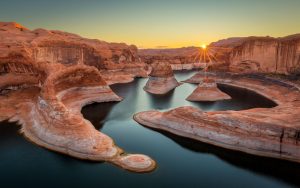
Some people say that Lake Powell offers some of the finest water recreation opportunities in the world. Lake Powell is the the second largest man-made lake in the United States, and visitors can bring their own watercraft or choose to rent houseboats, personal watercraft, powerboats, kayaks and other water toys.
Encompassing over 1.25 million acres, Glen Canyon National Recreation Area offers unparalleled opportunities for water-based & backcountry recreation. The recreation area stretches for hundreds of miles from Lees Ferry in Arizona to the Orange Cliffs of southern Utah, encompassing scenic vistas, geologic wonders, and a vast panorama of human history.